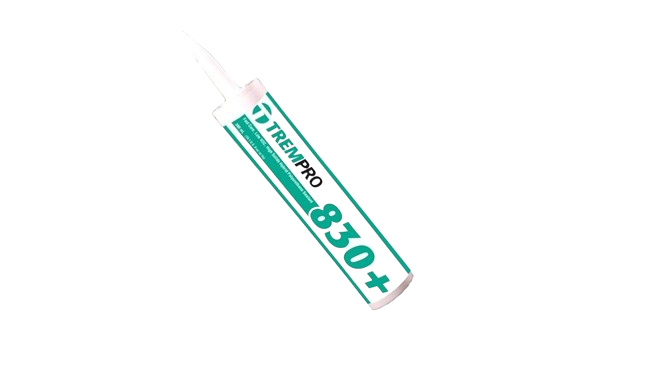Different Types of Caulking: what to use ?

When dealing with sealing gaps, cracks, and joints in construction or renovation projects, caulking is essential. It not only improves a structure’s appearance but also protects against air leaks, water intrusion, mold growth, and energy loss.
However, not all caulks are created equal. Using the right type of caulk for the job ensures a clean finish and long-lasting results. This guide will walk you through the most common types of caulking, their properties, and best-use scenarios to help you make an informed choice
In this article, we’ll explore the most common types of caulking, their characteristics, and typical applications.
1. Acrylic Latex Caulk (Painter’s Caulk)
Acrylic latex caulk, also called painter’s caulk, is easy to use. It is water-based, cleans up with water, and dries quickly.
Key features:
- Paintable after drying
- Best for indoor use
Ideal for:
- Dry areas like trim, baseboards, and moldings
- Gaps around indoor windows and doors
- Surfaces that will be painted
Limitations:
Not good for wet areas or joints that move a lot, therefore, it may crack or shrink over time.
Examples:
DAP Alex Painter’s, Tremco Tremflex 834, Soudal Latex Caulk

2. Silicone Caulk
Silicone caulk is great for sealing smooth, non-porous surfaces. It stays flexible and strong even with water and temperature changes.
Key features:
- Fully waterproof
- Flexible and durable
- Resists mold and mildew
Ideal for:
- Bathrooms and kitchens (tubs, sinks, backsplashes)
- Exterior windows and siding
- Glass, metal, ceramic, and plastic surfaces
Limitations:
Cannot be painted and requires solvent for cleanup. Keep in mind, hard to remove once dry.
Examples:
DowCWS, DowSil 1199, Tremco Tremsil 400

3. Siliconized Acrylic Caulk
This type blends acrylic latex with silicone. It is paintable and more water-resistant than basic acrylic.
Key features:
- Paintable and low odor
- Better adhesion than regular acrylic
- More flexible but easier to use than silicone
Ideal for:
- Kitchens and bathrooms with moderate moisture
- Painted surfaces inside the home
- DIY projects needing easy use
Limitations:
Less durable and less waterproof than pure silicone.
Examples:
DAP Alex Plus, Soudal Soudalac Acrylic Latex Caulk, Tremco Tremflex 834

4. Polyurethane Caulk
Polyurethane caulk is strong and flexible. It is used in tough commercial and outdoor jobs.
Key features:
- Very strong bond
- Paintable after curing
- Good for joints that move a lot
- Suitable for outdoor use
Ideal for:
- Concrete expansion joints
- Masonry like brick and stone
- Roofing, flashing, and siding joints
- Areas exposed to weather
Limitations:
Hard to apply, cures slowly, needs solvents for cleanup, and may yellow in sunlight.
Examples:
Dymonic FC, Tremco Vulkem 116, Soudal Soudaflex 40FC

5. Butyl Rubber Caulk
Butyl caulk is a rubber-based sealant used mainly outdoors. It sticks well and lasts in harsh weather.
Key features:
- Resists weather and UV rays
- Flexible and durable
- Bonds to metal, concrete, and tough surfaces
Ideal for:
- Gutter seams, roof flashing, and foundations
- Sealing vents and pipes
- Exterior joints on mobile homes and trailers
Limitations:
Cures slowly, is sticky and messy, and usually cannot be painted.
Examples:
Tremco Butyl Sealant, Tremco JS-773, Soudal Butyrub

6. Thermoplastic Elastomer (TPE) Sealant
TPE sealants mix rubber’s flexibility with plastic’s ease of use. They dry by evaporation, not by chemical curing. This makes them easy to apply and paint.
Key features:
- Very flexible and resists cracking
- Easy to smooth and apply
- Paintable after drying
- Bonds well to many materials
- Resistant to weather, UV, and cold
- Low odor and low VOC
- Water cleans up before curing
Ideal for:
- Window and door frame joints
- Trim, baseboards, and wall gaps
- Siding and soffits with little movement
- Masonry, wood, concrete, and metal joints
- Projects needing paintability and easy cleanup
Limitations:
Not for submerged joints. Less flexible than polyurethane and may soften in heat.
Examples:
Tremco TremPro 830+, Supra Expert



